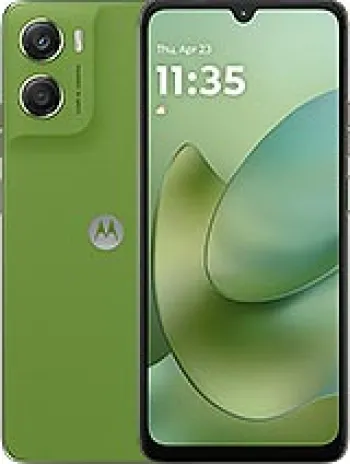
Overview
The Motorola A835 was a revolutionary device when it first appeared on the market, displaying an early example of 3G technology in the mobile phone industry. Announced in 2003 and later discontinued, this phone incorporated many features that were advanced for its time, paving the way for future developments in mobile technology.
Design and Build
The Motorola A835 was designed with practicality and functionality in mind. With dimensions of 135 x 58.2 x 24.2 mm and weighing in at 157 grams, it was somewhat bulky compared to today's smartphones, but not unusual for devices in that era. The phone featured a Mini-SIM card slot and was constructed primarily with durable materials meant to withstand the wear and tear of everyday usage.
Display
The phone sported a TFT display capable of showing up to 65K colors at a resolution of 176 x 220 pixels. While the exact size of the screen is undocumented, the display was quite vibrant for its time, allowing users to enjoy visual content with reasonable clarity.
Camera Capabilities
In the early 2000s, camera phones were just beginning to catch on, and the Motorola A835 was part of this innovative wave. It featured a VGA main camera capable of capturing photos and video. There was also a front-facing camera, though specifics on its resolution are unclear. The device allowed for basic photographic needs and was sufficient for capturing spontaneous moments.
Network and Connectivity
One of the standout features of the Motorola A835 was its use of GSM/UMTS technology, enabling both 2G and 3G capabilities. It supported GSM bands at 900/1800/1900 frequencies and UMTS band at 2100 frequency, allowing for enhanced voice and data connectivity. The data speeds reached up to 384 kbps, providing relatively fast internet browsing and email access for the time.
Connectivity options included Bluetooth 1.1, a proprietary USB interface, GPS for navigation, and even an infrared port. However, the phone did not have WLAN capabilities, which limited its internet connectivity options. The lack of a 3.5mm audio jack and radio were also noteworthy, although it did support downloadable polyphonic ringtones and EMS, MMS, and email messaging.
Battery Life
The device was powered by a removable Li-Po 1050 mAh battery. Battery performance offered up to 160 hours of standby time and up to 2 hours of talk time, which was typical for mobile phones during that period. The ability to replace the battery was a convenient feature, especially for users requiring extended usage between charges.
Performance and Software
As a feature phone, the Motorola A835 operated under a proprietary operating system. It included basic functionalities for messaging via SMS, EMS, MMS, and email. For browsing, the WAP 2.0/xHTML browser allowed limited access to internet services, constrained by the era's technological standards.
Java support enabled users to download additional games, enhancing the device's entertainment value. The phone's internal memory included 64MB of storage; however, there was no slot for memory expansion cards, which limited its storage capacity significantly compared to modern devices.
Audio and Sound
The Motorola A835 came with a basic sound setup that included options for vibration alerts and downloadable polyphonic ringtones. However, it lacked a loudspeaker and 3.5mm audio jack. The absence of these features meant that users had limited options for audio playback and external connectivity for audio devices.
Conclusion
The Motorola A835 is best remembered as a precursor to the more advanced smartphones we use today. At its core, it embodied the transitional period in mobile technology, where 3G connectivity became mainstream, and multimedia functionalities began to infiltrate mobile devices. While its features may seem limited by modern standards, at the time of its release, the A835 represented a significant step forward in the capabilities of mobile phones. Its design and features provided consumers with a glimpse of the smartphone potential and laid foundational elements that would later be expanded upon by future innovations in the industry.
Key Features of Motorola A835
- Supports GSM and UMTS network technologies
- 3G capability with speeds up to 384 kbps
- TFT display with 65K colors and a resolution of 176 x 220 pixels
- 64MB of internal memory with photo call support
- VGA main camera with video recording capability
- Selfie camera available
- Includes GPS for positioning
- Bluetooth 1.1 and infrared port for connectivity
- Supports SMS, EMS, MMS, and Email messaging
- WAP 2.0/xHTML browser for internet access
- Java support for downloadable applications
- Removable Li-Po 1050 mAh battery
Disadvantages of Motorola A835
- Discontinued model; no longer supported or available for sale.
- Heavy and bulky design with 157 g weight and significant dimensions of 135 x 58.2 x 24.2 mm.
- Lack of expandable storage; no card slot available.
- Low resolution display with 176 x 220 pixels and only 65K colors.
- No loudspeaker support.
- Absence of 3.5mm audio jack for headphones.
- No WLAN/Wi-Fi capability, limiting internet connectivity options.
- Outdated Bluetooth 1.1 version.
- No FM radio feature.
- Proprietary USB, which can limit compatibility with standard cables and devices.
- Limited battery life; talk time of up to 2 hours and standby time up to 160 hours.

View Also
More Phones
All Rights Reserved +14266 Phones © Mobilawy 2025

























